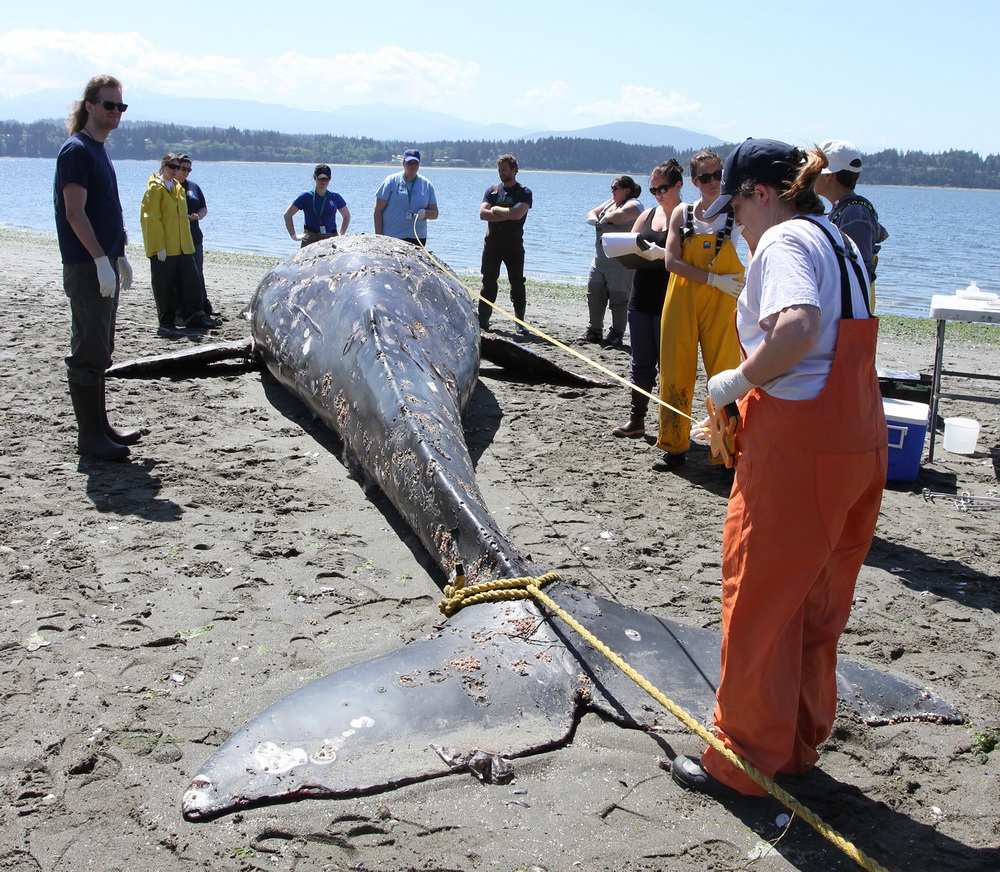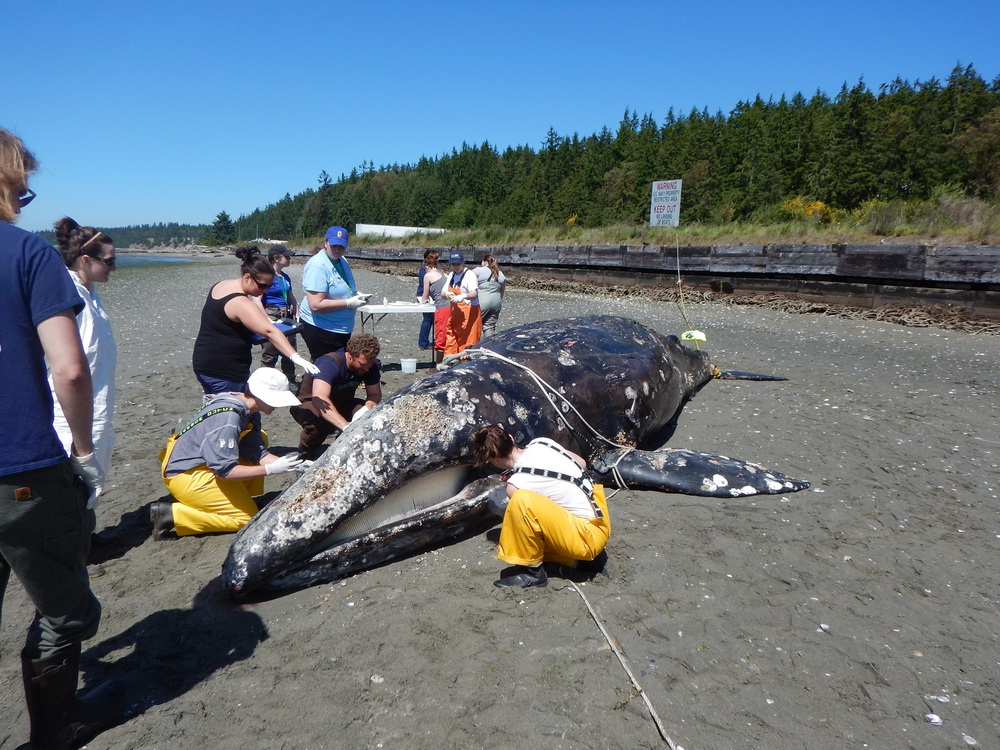The long and tragic saga of an injured and now dead gray whale that has been in Puget Sound for almost a month has almost come to an end with the completion of the necropsy and exam on 12 May 2016. Tracking, evaluation, and now examination of this whale has involved the help of numerous members of the NW Marine Mammal Stranding Network as well as cooperating state and federal agencies. The whale was first sighted alive in late April in central Puget Sound having difficulty swimming and diving apparently as a result of an injury or illness that had trapped gases in the upper part of its body. Two efforts were conducted in early May to examine the animal and determined there was no entanglement or obvious external cause of the condition that could be easily resolved. It apparently died around 7-8 May though then proved difficult to locate and track as it drifted with strong currents in the central Puget Sound. Dedicated efforts were begun on 10 May to locate the carcass with Cascadia and WDFW conducting searches and on the morning of 11 May the animal was located and towed with the help of Washington DNR to a spot on Navy land at Indian Island that the US Navy generously allowed for examination.
The necropsy was conducted on 12 May 2016 by Cascadia Research with assistance from the Navy, NOAA, WDFW, and the Pt Townsend Marine Science Center (who hopes to salvage the skeleton). Results were as follows:
- It was a 894 cm (29.3 ft) juvenile female (likely a yearling). The animal was clearly emaciated, externally thin, but blubber had some oil in it and it was fairly pliable. Inside it was actually pretty fresh. There was air in the tissue under the blubber layer in the chest cavity and also inside the cavity (as expected given its condition when alive). There was also quite a bit (a few gallons) of clear red fluid in the thoracic and abdominal cavities. The muscle was edematous and necrotic along the back in the area that was consistently exposed to the sun, but was fresh and appeared normal elsewhere. Upper part of the lung was congested with bloody fluid, lower portion was somewhat deflated, some necrosis in the pleura along the ventral portion of the lung. No worms and no froth. The heart tissue was very edematous on the outer surface and there was bruising inside the ventricle. The most dorsal portion of the liver (closest to the sun damaged area) was completely necrotic but the remainder was firm and appeared normal. All three stomachs were completely filled with mostly clear pink-tinged fluid (likely swallowed a lot of water) and a tiny bit of sand. Intestines were reddened, the upper intestines had creamy pink tinged fluid, colon was full of thick brown feces with bit of bark distinguishable. There was quite a bit of peachy colored urine and the inside of the urinary bladder appeared mildly bruised. Tissues will be examined for histopathology in coming days and weeks and may provide additional indications of the cause of death and this animals highly unusual condition when first seen alive.

Whale and Cascadia and Washington DNR vessels preparing for start of tow on 11 May 2016 (Photo S. Jeffries, WDFW).


Examination and necropsy underway on 12 May 2016 (Photos from Cascadia Research)